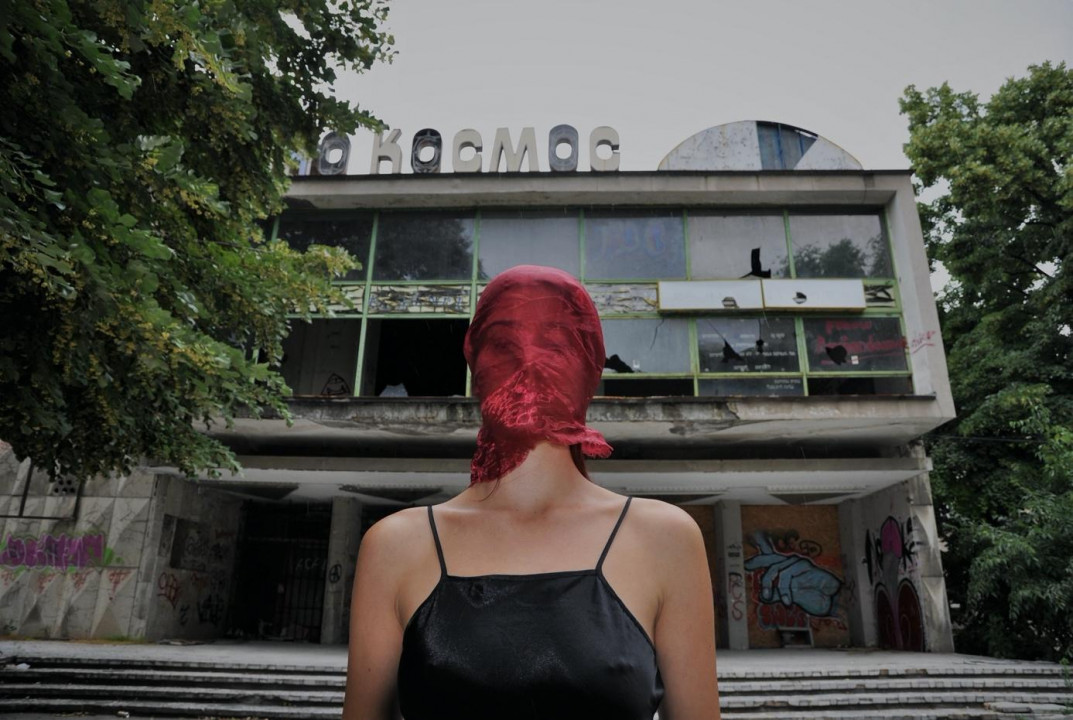
Author: Kalina Todorova
Where is that one place in Plovdiv where you can watch the latest film productions, attend scientific and technological conferences and symposia, as well as enjoy a glass of homemade lemonade in a cinematic old-school atmosphere? The place, of course, is the so-called Home of Science and Technology on Gladstone Street, also known as Lucky Home of Cinema.
Milcho Sapundjiev is the man standing behind the architectural development of the building - an architect who left his individual touch on many buildings in Plovdiv. The Home of Science and Technology stands out with its specific appearance of concrete columns and beams, bearing wide terraces, elements that are in stark contrast to those of the surrounding buildings and the park.
Founded in the mid-1980s, the Home carries the spirit of the so-called architectural brutalism - a specific style of architecture that originated in Britain, which stands out with its strict forms, concrete materials and raw aesthetics. One of the most striking examples of a product of this genre is the National Theater in London, which has provoked many opposing views among the media and violent reactions in society.
Although the architectural brutalism is a representative of post-war modernism, which was born in the 1950s, this style came to Bulgaria slowly and almost imperceptibly, reaching only a few areas in the country. This is because in Bulgaria at that time the dominant architectural attitude was different and many architects did not allow themselves to take risks by creating buildings in a different, avant-garde way. However, this did not prevent some from exploring the various trends and adding a dose of unconventionality to their work, drawing inspiration from Western developments. Far from the strict supervision of the capital's executive institutions, Plovdiv provided a field for more experimentation and autonomy.
The interior of the building is just as interesting. The decorative brick accents, huge chandeliers and posters of modern film screenings are a mixture of many modern and old-school elements that give visitors the feeling of time travel. This is mostly felt in the design and atmosphere of the Fargo Club, located on the second floor overlooking the city garden. The club, together with the Lucky Cinema located in the heart of the building, combine the tradition of an authentic cinematic experience with the contemporary way of life.
Today, the building continues to house the non-profit association ‘Territorial Organization of Scientific and Technical Unions with the Home of Science and Technology’. It is a little known fact that it is a member not only of the Federation of Scientific and Technical Unions in Bulgaria, but also of the World Federation of Engineering Organisations and the European Federation of National Engineering Associations. This provides many opportunities for young people to participate in various forums, business conferences and projects.
Ultimately, the Home is one of the few successful attempts to merge old and new, traditional and modern, preserving not only the building in all its appearance and functionality, but also adding innovative approaches to renew its aims and purpose.
Other spaces in Plovdiv, however, have endured a radically different fate.
Less than 50 meters from the Home of Science and Technology on 40 Gladstone Street is the Cosmos Cinema. Built in 1964, the cinema was designed by architect Lyubomir Shinkov with the idea of being a more modern, innovative building, housing an amphitheatre cinema.

Interestingly, the initial concept of the cinema was much larger than the realised project. In his book "Architecture", architect Lyubomir Shinkov reveals that the cinema was supposed to have 900 seats and the roof was meant to have the ability to be opened during the summer months. Until 1989, the cinema was called "Komsomol" (an abbreviation of the communist youth movement) and was afterwards renamed "Cosmos". It continued its life path until 1999, when all screenings were finally stopped.

In the following years, walls were erected inside the building and the premises became a public space with various purposes. First there was a club, then the cinema became a gaming room for video games, and before the building was finally abandoned, the premises were used for housing computer clubs which were popular at the time.

Thus the building was left to the whims of fate. In 2011, its status was changed and its destruction became possible. This led to mass protests by citizens. Artists, public figures and experts opposed the idea of erasing this renowned emblem of Plovdiv’s culture. After that the Municipality of Plovdiv renounced its intentions.

Since then, a number of projects and initiatives ensued which were related to the Cosmos Cinema and the idea to save the building and revive the life in it. However, none of the projects have been completed, and the cinema continues to crumble, sinking into oblivion.